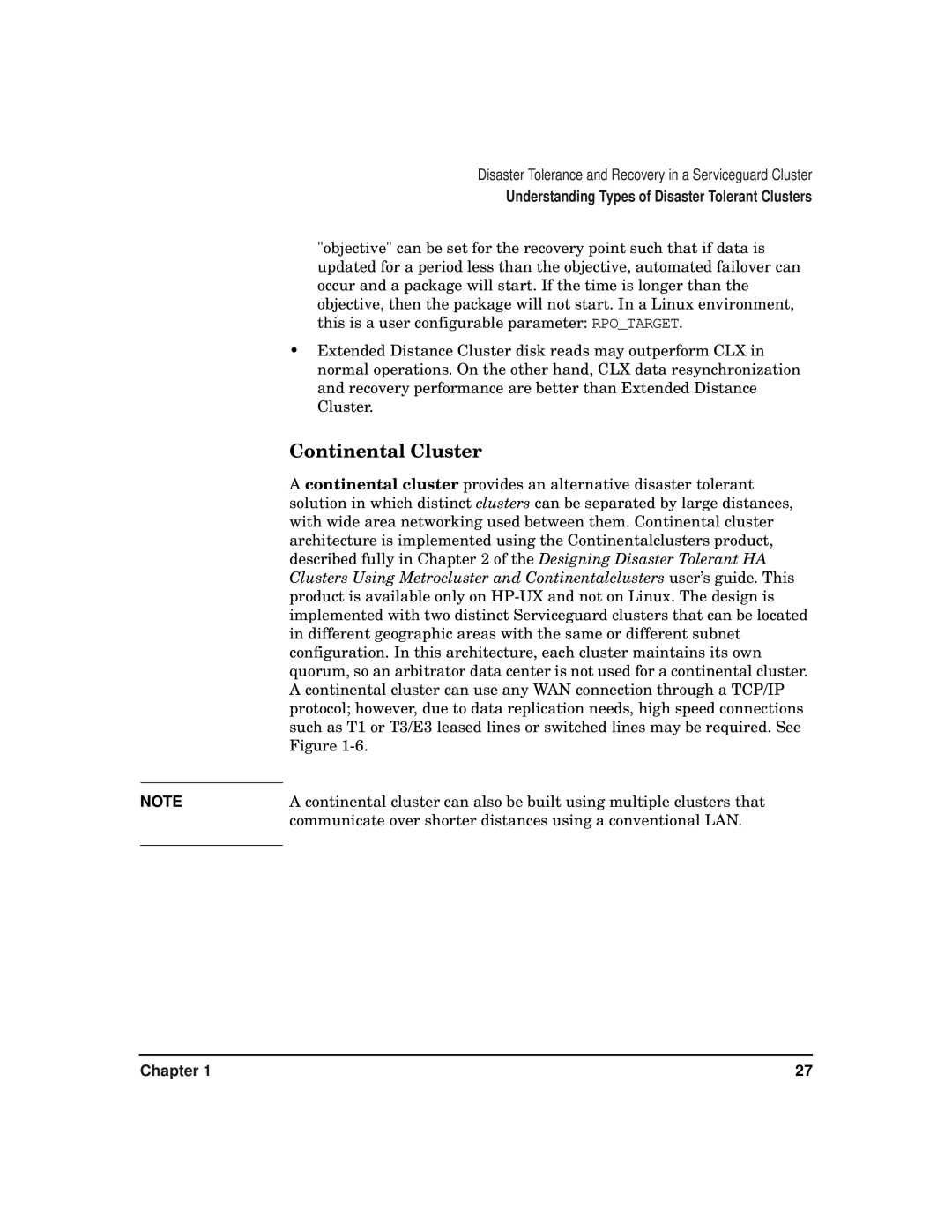
Disaster Tolerance and Recovery in a Serviceguard Cluster
Understanding Types of Disaster Tolerant Clusters
"objective" can be set for the recovery point such that if data is updated for a period less than the objective, automated failover can occur and a package will start. If the time is longer than the objective, then the package will not start. In a Linux environment, this is a user configurable parameter: RPO_TARGET.
•Extended Distance Cluster disk reads may outperform CLX in normal operations. On the other hand, CLX data resynchronization and recovery performance are better than Extended Distance Cluster.
Continental Cluster
A continental cluster provides an alternative disaster tolerant solution in which distinct clusters can be separated by large distances, with wide area networking used between them. Continental cluster architecture is implemented using the Continentalclusters product, described fully in Chapter 2 of the Designing Disaster Tolerant HA Clusters Using Metrocluster and Continentalclusters user’s guide. This product is available only on
NOTE | A continental cluster can also be built using multiple clusters that |
| communicate over shorter distances using a conventional LAN. |
|
|
Chapter 1 | 27 |
